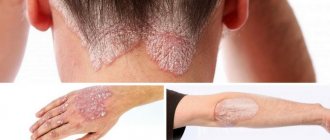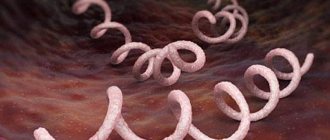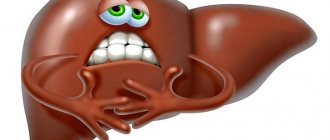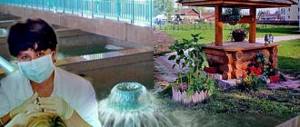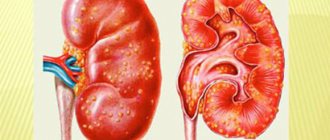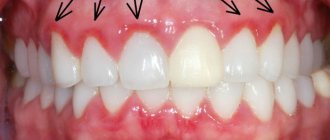About fever
Victor Leshkov
General practitioner, ophthalmologist.
Dengue fever is an infectious vector-borne disease that can occur in a classical or hemorrhagic form. The pathology is widespread in the countries of Southeast Asia, including Vietnam. The disease also occurs in other regions with tropical and subtropical climates - Australia, South America, and the Mediterranean.
— Victor Leshkov General practitioner, ophthalmologist.
Hundreds of thousands of dengue fever cases are diagnosed every year in these areas. Due to the spread of tourism, it is possible that the disease will be detected in other parts of the world.
COMPLICATIONS
The classic form of the disease usually goes away without any consequences. A person receives lifelong immunity to the serotype of the virus that caused the disease, but does not protect against the other three.
The most common complications of hemorrhagic fever:
- development of shock followed by death;
- pneumonia;
- the occurrence of encephalitis or meningitis;
- mumps\otitis;
- psychosis.
Re-infection with the virus poses a great danger, since the disease can be more severe due to the presence of antibodies in the blood. The consequences of dengue fever in this case are unpredictable.
Causes of Dengue fever
The disease is caused by the Dengue arbovirus, a pathogen that is transmitted through arthropods, including mosquitoes. There are 4 serotypes of the pathogen, but in recent years there has been talk of a possible fifth type. The form of the infectious process does not depend on the type of virus.
The pathogen is stable in the external environment; it easily tolerates drying and freezing. Viral particles die from exposure to ultraviolet radiation, proteolytic enzymes, and at high temperatures.
How to avoid getting dengue?
It is impossible to protect yourself and your loved ones 100% from dengue fever. But, you can reduce your chances of getting sick to a minimum if you follow the rules and recommendations.
mosquito repellents for children and adults in Thailand
On vacation in Thailand and in Asia in general, use repellents everywhere and always. Their potential harm pales in comparison to what mosquitoes can do here.
– Light mosquito coils on balconies – Smear your children and yourself from top to bottom with natural mosquito repellent creams and oils – Always keep repellent plugged into the socket in your apartment – Try to stay in an apartment or hotel with mosquito nets – Choose a higher floor (above 23 -25 mosquitoes do not reach) – Do not wear sweet perfume or cream with a sweet smell – Wear clothes of a neutral color, without a bright print
Dengue mosquitoes are especially biting in the morning and afternoon. There is information that at night and after sunset they are inactive. Whether this is true or not, I cannot judge.
good baby powder for mosquitoes for children
How the disease is transmitted from person to person
The source of infection is a sick person, as well as bats and monkeys. The virus is transmitted by mosquitoes belonging to the genus Aedes.
When bitten, the patient's blood enters the mosquito's digestive tract. The viral particles contained in it begin to multiply at a temperature of 22 °C and gradually penetrate into other parts of the mosquito’s body. The duration of this process is from 8 to 14 days, after which the insect becomes infectious. At higher ambient temperatures, viruses multiply faster.
Mosquitoes live in places near open water sources, such as wells, ponds, etc. They bite more often in the morning and evening hours. One bite is enough to infect a person, so there is a high probability of widespread spread of the disease and the occurrence of epidemics.
Mosquito - carrier
CAUSES
The cause of tropical fever is an arbovirus of the Flavivirus genus, which enters the human blood through the bite of an infected female mosquito. The dengue virus develops in the mosquito's body only at a temperature of at least 22°C and is resistant to low temperatures and drying. Does not withstand heating up to 60°C, exposure to ultraviolet rays, treatment with formaldehyde or ether.
The dengue virus has four serotypes: DEN-I, DEN-II, DEN-III, DEN-IV. The dependence of the form and severity of the disease on infection with a certain type of virus has not been established by science. You can become infected with one or several types of viruses at once. In this case, the disease is severe.
An infected person (or monkey) becomes the source of the spread of the virus within 12 days after the first symptoms appear.
Symptoms
After penetration into the human body, viral particles enter the cells of the lymph nodes and endothelium of the vascular bed. The incubation period lasts until the primary replication of the pathogen is completed. After this, it spreads throughout the human body, penetrating the cells of internal organs and having a damaging effect on them. This leads to the development of intoxication syndrome, the main symptom of which is fever.
Depending on the predominance of certain symptoms, the disease can occur in two variants.
Classic shape
This variant of the infectious process occurs most often during primary infection. It is characterized by the following features:
- fever up to 40 °C. It usually lasts for 3 days, after which the body temperature quickly returns to normal. This period of apyrexia lasts up to 3 days, then the attack of fever is repeated;
- pronounced signs of intoxication - chills, muscle and joint pain, discomfort in the spine, which can lead to a change in the patient’s gait;
- lack of appetite;
- neurological symptoms – headaches, dizziness, sleep disturbances;
- redness of the conjunctiva, hyperemia of the pharynx, swelling of the face.
In the classic form of dengue fever, a rash may appear on the body. At first it is localized on the torso, gradually spreading to the arms and legs. After 3–7 days it completely disappears.
The rash can be petechial in nature, representing small hemorrhages on the skin. Scarlet fever rash appears as red spots. Urticaria is characterized by the presence of small, intensely itchy blisters.
Hemorrhagic form
This variant of the infectious process often develops in people who have had dengue fever several times and who have lived for a long time in endemic areas. In this case, the asymptomatic period lasts from 4 to 10 days. After this, manifestations associated with intoxication of the body quickly arise. The patient has an increase in body temperature, chills, and headaches. Along with this, there are the following symptoms:
- redness of the conjunctiva;
- indigestion in the form of nausea, vomiting;
- lethargy, disorientation;
- skin rashes.
The last symptom usually occurs 3-4 days after the end of the incubation period. The rash is hemorrhagic in nature and can vary from pinpoint to widespread. Damage to the capillaries leads to nosebleeds and hemorrhages in the tissue of internal organs. For this reason, patients with Dengue fever often experience the presence of blood in their urine, feces, and vomit.
Causes and factors of infection
The contagious yellow fever mosquito (Aedes aegypti) is the main vector of the virus. Its peculiarity is considered to be living mainly in urban environments and feeding in the morning and daytime, which contributes to the effective transmission of the pathogen. However, it is not the only cause of the disease. The second most important is the Asian tiger mosquito (Aedes albopictus), which is well adapted to the cold climate of Europe.
The yellow fever mosquito, which transmits dengue fever, lays eggs in containers with water: jars, barrels, wells or tanks
The virus enters the human body even after one bite. Primary reproduction of the pathogen occurs in the lymphatic vessels near the wound and endothelial cells. Further, the viruses reproduced in the body circulate in the circulatory system, affecting various organs and tissues, after which they are neutralized by the produced antibodies.
With the development of hemorrhagic fever, in addition to damage to the lymph nodes and vascular endothelium, a disruption of the cells responsible for immunity occurs. As a result, the reproduction of the arbovirus increases, which leads to severe disturbances in microcirculation and blood clotting.
One day before the appearance of clear clinical symptoms and for the next 5 days, the sick person is a source of infection. A mosquito that bites an infected person during this period becomes a carrier. This transmission route is called transmissive.
So the cycle “sick person - mosquito - healthy person” is repeated many times and contributes to the circulation of the pathogen in cities and suburbs.
A mosquito bites a sick person, then a healthy person, thus spreading the virus
Disease in children
Dengue fever usually manifests itself in children with weakly specific symptoms, which makes diagnosis difficult. At an early age, there is a sharp increase in body temperature and a pronounced intoxication syndrome. Along with this, a rash appears, nasal breathing becomes difficult, and a dry cough occurs. The disease, as in adults, lasts about 7 days.
In children aged 5–6 years, the symptoms of infection differ little from those in older patients. Characteristic signs depend on the form of the pathological process.
Notes[ | ]
- Disease ontology database (English) - 2020.
- DENGE FEVER • Great Russian Encyclopedia - electronic version (unspecified)
.
bigenc.ru
. Retrieved June 27, 2020. - Neglected Tropical Diseases (undefined)
.
cdc.gov
(June 6, 2011). Retrieved November 28, 2014. Archived December 4, 2014. - ↑ 1 2 3 4 5 6 7 8 9
Dengue and severe dengue Fact sheet N°117
(unspecified)
.
WHO
(May 2015). Retrieved February 3, 2020. Archived September 2, 2020. - ↑ 1 2 3 4 5 6 7 8 Kularatne SA
Dengue fever (English) // The BMJ. — 2020. — September (vol. 351). - P. h4661. - doi:10.1136/bmj.h4661. - PMID 26374064. - Noble et al., 2010, pp. 450-462.
- ↑ 1 2 Whitehorn J., Farrar J.
Dengue (English) // British Medical Bulletin (English) Russian.. - 2010. - Vol. 95. - P. 161-173. - doi:10.1093/bmb/ldq019. - PMID 20616106. - ↑ 1234
WHO, 2009, pp. 10-11. - Comprehensive guidelines for prevention and control of dengue and dengue haemorrhagic fever. — Rev. and expanded.. - New Delhi, India: World Health Organization Regional Office for South-East Asia, 2011. - P. 17. - ISBN 978-92-9022-387-0. Archived copy from June 14, 2020 on the Wayback Machine
- ↑ 12
Ranjit, Kissoon, 2011, pp. 90-100. - ↑ 1 2 3 WHO.
Chapter 2: clinical diagnosis // Dengue haemorrhagic fever: diagnosis, treatment, prevention and control (English). — 2nd. - Geneva: World Health Organization, 1997. - P. 12-23. — ISBN 978-92-4-154500-6. - ↑ 12
Gubler, 1998, pp. 480-496. - Henchal et al., 1990, pp. 376-396.
- Bhatt et al., 2013, pp. 504-507.
- Carabali et al., 2020.
- Stanaway et al., 2020, pp. 712-723.
- CDC - Neglected Tropical Diseases - Diseases (English). www.cdc.gov (7 March 2018). Retrieved February 28, 2020.
- Simmons CP, Farrar JJ, van Vinh Chau N., Wills B.
Dengue (English) // The New England Journal of Medicine. - 2012. - Vol. 366, no. 15. - P. 1423-1432. - doi:10.1056/NEJMra1110265. - PMID 22494122. - Normile, 2013, p. 415.
- Mustafa et al., 2020, pp. 67-70.
- World's first dengue fever vaccine launched in the Philippines, CNN (April 6, 2016).
- Dengue vaccine: WHO position paper – September 2020 // Weekly epidemiological record. — 2020. — September 7 (vol. 36, no. 93). — P. 457—476.
- Dengue (undefined)
. United States Centers for Disease Control and Prevention (March 28, 2016). - “Use acetaminophen. Do not take pain relievers that contain aspirin and ibuprofen (Advil), it may lead to a greater tendency to bleed." Retrieved April 27, 2020. - WHO, 2009, pp. 32-37.
Diagnostics
If dengue fever is suspected, the patient should be examined by an infectious disease specialist. For diagnosing the disease, the characteristic clinical picture and a history of visiting epidemiologically dangerous countries are of greatest importance. The most telling signs:
- rashes;
- enlarged and painful lymph nodes;
- joint and muscle pain;
- re-development of symptoms after a temporary period of improvement.
In the case of an atypical course of the disease, when there is no period of apyrexia and no rashes, making a diagnosis can be difficult. Diagnosis of hemorrhagic fever should include a tourniquet test. It consists of temporarily applying a bandage to the patient's upper limb. After five minutes, the tourniquet is removed, and new areas of rash appear at the site where it was applied.
To confirm the diagnosis, laboratory tests are performed:
- PCR – this method allows you to determine the presence of viral particles in the patient’s blood. This is the most reliable way to diagnose the disease, but at the same time the most expensive;
- serological methods (ELISA, RPGA and others) make it possible to determine the concentration of antibodies to viral particles in the blood. Such studies can be carried out several times to assess the dynamics of the disease.
In addition, a general blood test is prescribed, which, in the presence of Dengue fever, will show a decrease in the number of white blood cells and platelets. According to a biochemical blood test, a decrease in pH is determined, indicating metabolic acidosis. With liver damage, the levels of ALT and AST increase.
In severe cases of the disease, due to a decrease in blood plasma volume, a decrease in the amount of albumin protein is observed. In this case, a relative increase in the number of red blood cells is observed.
Differential diagnosis is carried out with malaria and viral diseases - influenza, measles, rubella, yellow fever. The hemorrhagic variant should be differentiated from diathesis in children, as well as from other fevers, which are characterized by the presence of bloody rashes.
Prevention
The spread of this disease can be reduced by taking the following measures:
- If possible, wear clothing that covers the entire body. This prevents mosquitoes from attacking your skin.
- Use mosquito repellent in your room.
- Use screens and screens on windows.
- Avoid storing water in bathrooms and kitchens as mosquitoes that spread dengue breed in clean and stagnant water.
- Avoid keeping plants indoors. After all, this is an ideal breeding ground for mosquitoes.
Dengue fever treatment
All patients diagnosed with this pathology are indicated for hospitalization. There are no drugs to combat the cause of the disease. Therefore, patients are given therapy aimed at eliminating intoxication and improving their general condition:
- painkillers and anti-inflammatory drugs to relieve muscle and joint pain;
- sedatives, hypnotics for sleep disturbances, psycho-emotional agitation, delirium;
- glucocorticosteroids in case of severe intoxication syndrome, severe pain;
- general antibiotics if a secondary bacterial infection is suspected;
- vitamin therapy to increase the body's resistance.
An important role in the symptomatic treatment of dengue fever is played by measures aimed at combating dehydration. In mild cases, drinking plenty of fluids frequently is enough to improve the patient's condition. In cases of significant loss of liquid blood and the occurrence of metabolic acidosis, infusion therapy is indicated. It consists of intravenous administration of alkaline solutions, hemodez, glucose.
If shock develops, the patient is indicated for a plasma transfusion. You can also use special solutions to restore the volume of circulating blood. At the same time, the patient must receive medications that improve cardiac function, and oxygen therapy is necessary. This treatment is carried out in the intensive care unit until the patient’s condition is stabilized.
Algorithm for a tourist’s actions when symptoms of dengue fever are detected
In this case, it is important that the tourist has medical insurance, otherwise all medical services will have to be paid for.
The algorithm of actions when detecting symptoms of dengue fever will be as follows:
- You need to call the local intermediary's service company (assistance) at the phone number specified in the insurance, or contact your own insurance company.
- Provide assistant employees with your personal information and insurance policy number.
- Contact a medical organization named by the insurer. If urgent hospitalization is necessary, the assistance company itself will organize this process.
There are countries where the hospital may not accept insurance company guarantees. In this case, it will be necessary to pay for treatment, and the insurance company will reimburse the costs upon returning home. This nuance must be clarified when purchasing insurance.
Some hotels abroad have medical aid points where you can also go. However, you must clarify in advance whether this service is included in the price of your stay or whether you will have to pay for it. If you do not have health insurance, you will have to bear all costs, even in the event of a medical emergency.
Possible consequences, complications
Viral particles through the bloodstream easily enter the liver, muscles, bone marrow and nervous system. Due to the destruction of affected cells, there is a high probability of developing many complications, for example:
- meningitis, encephalitis, in severe cases – cerebral edema;
- acute psychoses;
- nerve inflammation;
- otitis;
- with damage to glandular tissue - mumps, orchitis;
- thrombophlebitis;
- infectious-toxic shock.
During the period of bearing a child, the disease is most dangerous, since there is a high probability of miscarriage, premature birth or intrauterine fetal death.
How much does dengue treatment cost?
Treatment of dengue in Thailand is expensive, since here any medical procedures are expensive.
In order not to throw 200 - 300,000 rubles out of your pocket, you need to take out insurance before traveling to Thailand. During an illness, it will be too late to insure, and there are much fewer remote insurance options and they are more expensive than if you do it in Russia.
Hospitalization with dengue for 7-9 days in Pattaya - Pattaya Memorial Hospital - from 100,000 baht (220,000 rubles) per person Hospitalization in Bangkok Pattaya Hospital with dengue - from 150,000 baht (from 330,000 rubles)
Hospitalization in Phuket - from 1,20,000 baht (230,000 rubles)
The family bills of my friends exceeded 250 - 350,000 baht. That is, about 500 - 700,000 rubles. It is unlikely that anyone would like to pay such a sum out of pocket, but there is no way out. Treatment needs to be done urgently.
Contraindications and prognosis
Patients with Dengue fever are contraindicated:
- acetylsalicylic acid;
- diclofenac;
- ibuprofen.
These drugs impair platelet aggregation, which increases bleeding. As an alternative, paracetamol is allowed.
With timely diagnosis and initiation of treatment before signs of shock appear, the prognosis is favorable. However, deaths cannot be excluded - during epidemics, mortality can reach 5% among all patients. In the case of hemorrhagic fever, up to 50% of patients die.
People who recover from the disease usually develop immunity to one of four possible viral serotypes for two years. To other subspecies of the pathogen, partial resistance occurs for no more than 3 months. Cases of re-infection have been recorded within 3 weeks after recovery, which is due to the possibility of mosquitoes carrying several types of pathogens at once. At the same time, the presence of antibodies to the virus aggravates the course of the disease, so the second disease is more often accompanied by the development of complications.
TREATMENT
There are no drugs that have been developed specifically for the treatment of dengue fever. Patients must observe strict bed rest, drink 200 ml of liquid every 2 hours (not only water, but also freshly squeezed juices, milk) to replenish the body’s water balance.
Painkillers may be prescribed to relieve joint pain, and antihistamines may be prescribed to eliminate allergic reactions to bites. It is also necessary to replenish the loss of vitamins C, K and B with the help of vitamin complexes.
To reduce the temperature during dengue fever, only paracetamol can be used, but aspirin (acetylsalicylic acid), diclofenac and ibuprofen are contraindicated, since these drugs unnecessarily thin the blood.
If the patient's condition sharply worsens, urgent hospitalization will be required.
Indications for urgent hospitalization:
- excessive excitability/inhibition of the patient;
- increased heart rate, which remains weak;
- blue discoloration of the lip area;
- feeling of coldness in the extremities;
- unreasonable decrease in pressure.
All of the above symptoms are manifestations of a state of shock that requires immediate medical attention, which consists of administering blood plasma or its substitutes, as well as prescribing antibiotic therapy for bacterial complications.
Timely measures taken help reduce the mortality rate of severe dengue manifestations to 1%.
Prevention, vaccination against fever infection
Nonspecific prevention of the disease is based on preventing contact with carriers of viral particles. To do this, in places of increased epidemiological danger, the following measures are taken:
- kill mosquitoes using chemicals;
- place mosquito nets on the windows;
- use repellents and other means to repel mosquitoes;
- patients are isolated in rooms where contact with the carrier is impossible until the person is completely cured.
People traveling to endemic areas are advised to wear long sleeves. Also, before traveling, you should familiarize yourself with the current epidemiological situation in the country.
As a specific preventive measure, the CYD-TDV vaccine is used, which includes weakened viral particles of four serotypes. It is allowed to be used from 9 years of age. According to research, the effectiveness of the vaccine ranges from 60 to 80%. Vaccination is contraindicated for young children, as it is believed that it may worsen the course of the disease.
Dengue fever is a common infectious disease in tropical regions. People who travel to Vietnam and other countries in Southeast Asia are advised to take measures aimed at preventing the development of this pathology. Timely vaccination and compliance with nonspecific prevention measures will significantly reduce the risk of infection.
Distribution[ | ]
The earliest descriptions date the outbreak to 1779[12]. Its viral cause and spread became understood at the beginning of the 20th century[13]. After World War II, dengue fever became a global problem and spread to more than 110 countries, mainly in Asia and South America[10][12]. Every year, between 50 and 528 million people become infected and about 10,000 to 20,000 people die[14][15][7][16].
Currently, dengue fever occurs primarily in the countries of South and Southeast Asia, Africa, Oceania and the Caribbean. Refers to “neglected tropical diseases”[17]. The annual incidence is about 50 million people[18].
Sources of infection include sick humans, monkeys and bats. Transmission of infection from a sick person is carried out by mosquitoes (Aedes aegypti in humans and Aedes albopictus in monkeys)[5][4]. Most often, infection occurs through contact with insects - the main breeding grounds for mosquitoes are clay vessels, metal barrels and concrete tanks used to store household water supplies, as well as discarded plastic food containers.
Features of the disease
Dengue fever is a vector-borne disease caused by the virus of the same name, found in tropical and subtropical climate zones. Cases of mass infection have been identified in 110 countries, Australia, Africa and Oceania, on the South American continent, southeast Asia, and the Mediterranean coast.
Outbreaks of epidemics depend on the seasons and are observed during the rainy season. In endemic areas, usually in cities, up to several hundred thousand people are infected per year; precedents are recorded outside the outbreak areas during the migration of already infected people or the importation of carrier mosquitoes.
Fever manifests itself in two independent forms, differing in symptoms and consequences of infection:
- Classic. It is accompanied by a feverish state, pain in the joints and muscles, the development of lymphadenitis (inflammation of the lymph nodes) and leukopenia (decreased white blood cells).
- Hemorrhagic. The disease is severe and is characterized by impaired vascular permeability. Hemorrhagic diarrhea develops due to a decrease in the number of platelets in the blood (thrombocytopenia) and a clotting defect. A decrease in circulating blood, proteins and electrolytes causes disturbances in organ function, which leads to shock and becomes the main cause of high mortality rates from the disease (up to 50% in some areas).
There are cases of atypical and asymptomatic course of the disease, which is associated with the characteristics of the genes of individual individuals.

